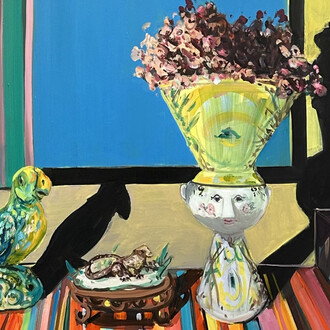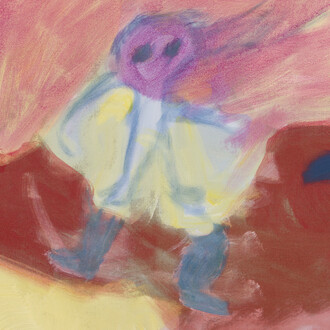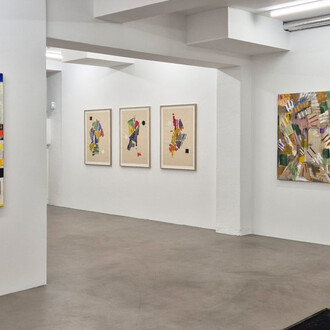Picasso’s original ceramic works – a distinct but perhaps not so well known part of his oeuvre – are now to be presented for the first time in a large selection for the Scandinavian public at the Louisiana Museum of Modern Art.
The exhibition Picasso Ceramics presents more than 150 works from the period 1947-1964. Over the years Louisiana has enjoyed excellent cooperation with the Picasso family, and with strong support from the family as well as from the Picasso museums in Paris, Antibes and Barcelona it has been possible to gather and compose a broad thematic selection of the artist’s ceramic works.
After World War II Pablo Picasso (1881-1973) returned to the south of France, where he lived by the Mediterranean for the rest of his life. There he initiated a collaboration with Suzanne and Georges Ramié’s pottery Madoura in Vallauris which led to the production of around 4,000 unique ceramic works. The work at the pottery with the ancient techniques inspired Picasso to explore and to experiment with forms and decorations from more than a thousand years of varied and more or less interrelated Mediterra-nean cultures. His production ranged from the painting and treatment of plates, jugs and dishes already in production at Madoura through more sculptural objects to works that add an extra dimension by combining form and decoration in entirely new ways.
The exhibition, shown in Louisiana’s West Wing, is divided into a number of thematic focuses in a loose chronology, all contributing to insights into the various motifs and forms with which Picasso worked – and into the traditions and sources of inspiration he explored and combined.
Picasso showed no interest in throwing his own ceramic forms on the wheel. He preferred to start with the utility objects that were already in production. At first he was mainly attracted to large oval plates (plats longs) cast in white earthenware. On these, in collaboration with the potters, he tried out a variety of ceramic techniques for treating the surfaces, and 21 of these plates can be seen in the exhibition. Images of women constitute a well known motif in Picasso’s oeuvre. In particular, women with whom he had a close relationship were his preferred models. The exhibition shows a wealth of examples of how Picasso transformed ceramic utility objects into anthropomorphic (human-like) figures – for example by turning a vase or jug upside down and painting it to become a bust of a woman.
One group of Picasso’s female figures is inspired by the antique Tanagra figures – terracotta figurines of standing or seated women – which Picasso modelled from 1947 and for some years to come. With a starting point in the tall, slender bottles and vases thrown by the potters Picasso created new interpretations of the Tanagra women.
After his first visit to the pottery in 1946 Picasso began to investigate the sculptural, aesthetic and technical potential for transforming individual ceramic elements into new figurations, and jotted his ideas down on paper. In a small cabinet at the exhibition a selection of a few of these preparatory sketches will be shown. After working for a time decorating standard products Picasso began to combine the painter’s approach with a more sculptural exploitation of the ceramic forms in a number of anthropomorphic and zoomorphic forms, the so-called structural pots (pots structuraux). The objects were made from traditional ceramic forms – vases and jugs and their parts such as neck, foot, handle, spout and body – put together in new ways as birds, bulls, women and other figures.
Throughout his career Picasso worked with the classic genre still life, to which he added an extra dimension in the ceramics. The exhibition shows vases with bouquets of flowers quite in the Dutch tradition. Fish and shellfish, too, became important elements with inspiration from the southern French fish markets and beaches, and with references to an old Spanish tradition in which images of bunches of grapes, figs or other edible objects were applied to plates (platos de engaño).
Ever since his childhood Picasso had drawn animals. The dove is one of the motifs we associate with the artist; but the owl, the goat and the bull, which he showed in so many contexts, also appear in his ceramics. They figure both as painted motifs on the large round or oval dishes and as modelled ceramic sculptures. Picasso felt connected to the Mediterranean culture. The mythology and imagery of the ancient world lay as a reservoir of motifs and ideas in his artistic world. Mythological figures like fauns, often playing on double flutes, centaurs, the Minotaur and nymphs were painted on jugs, vases and dishes.
During his youth in Málaga Picasso became familiar at an early stage with bullfighting, which became a recurring motif in his work. In 1951 he created his first bullfighting motifs on the Madoura pottery. Ex-ploiting the forms of the dishes and plates, he transformed them into bullfighting scenes seen in a bird’s-eye view. In the period 1953-1957 Picasso often returned to this motif and experimented with capturing its dynamics and movement in simple black strokes.
Edition Picasso is a ceramic series in limited editions which helped Picasso realize his dream that everyone should be able to own a Picasso. From 1947 until 1971 he designed more than 600 different editions in collaboration with the Madoura workshop. At first the editions could be bought very inexpensively in the south of France, but after Picasso’s death in 1973 the prices of the editions began to rise. The stamps on the bottom indicate which technique was used as well as the authenticity and provenance of the objects. In the last room of the exhibition a small selection of serially produced editions is shown, including a whole service.












